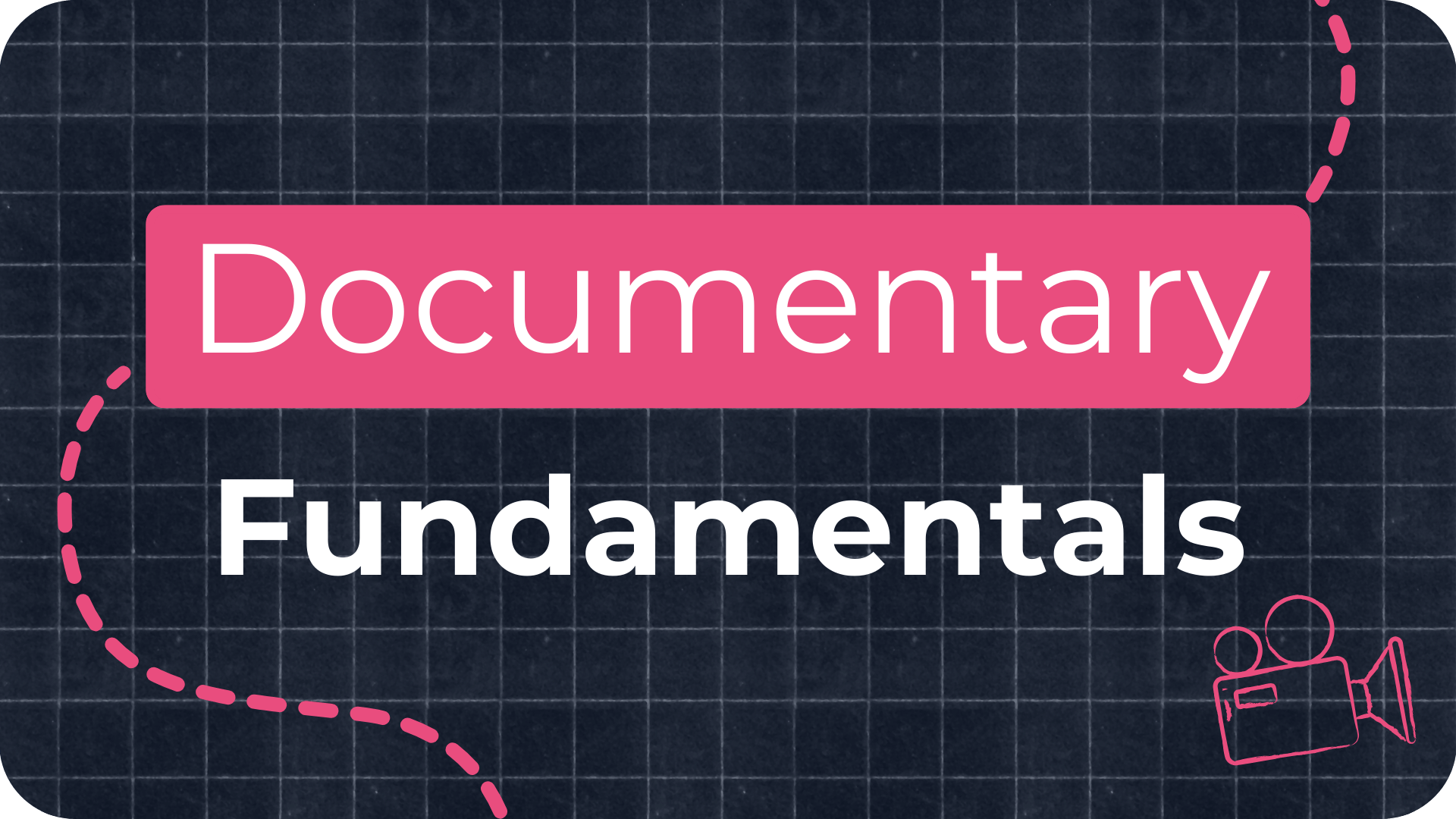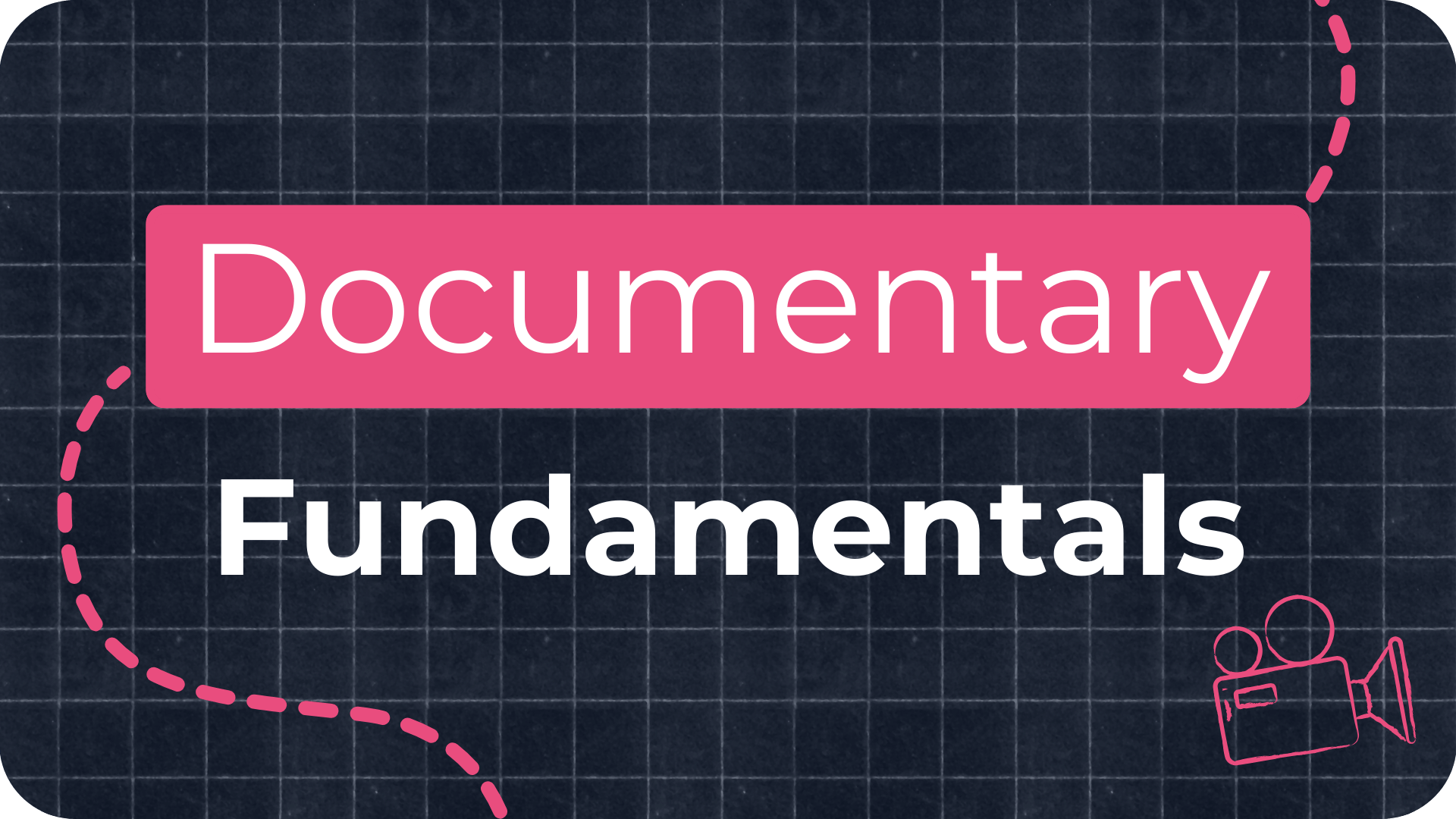How to Make a Documentary: Step-by-Step Guide for Beginners

Want to know how to make a documentary in 2025 but don’t know where to start? You’re not alone. Starting your first documentary film can feel overwhelming. You’ve got an idea, maybe even a subject, but the filming and editing process feels out of reach. In this guide, I’ll walk you through the 12 essential steps to make a documentary, even if you have zero experience. These are the same steps I use when making films, broken down clearly so you can take action. At the end, I’ve also included a short section on AI in filmmaking and how I see it shaping documentaries right now.
Learn How to Make a Documentary Without Experience
You don’t need fancy gear or a degree to make your first documentary. I started out just like you: no experience, lots of questions. Since then, I’ve directed award-winning films, worked with major brands, and built a filmmaking school to help others do the same. To get started, download my free training video here: 10 Secrets to Creating Cinematic Documentaries
How to Make a Documentary: Step-by-Step Process
By the end of this article, you’ll know how to:
-
Find a great documentary idea
-
Choose your style and structure
-
Film, edit, and share your documentary
You’ll also find links to more detailed resources and templates along the way.
The 12 Essential Steps to Make a Documentary Film
1. Find Your Documentary Idea
Start with a subject you care about. A personal connection will keep you motivated. Look for strong characters, access to a location, and something unfolding over time.
👉 How to Find and Develop Documentary Ideas

2. Choose Your Documentary Style
Should your film be interview-led? Narrated? Observational? Each style has pros and cons. You can also mix styles.
👉 Documentary Narration Styles Explained
3. Use a Three-Act Structure
Organise your story into beginning, middle, and end. This classic structure works for almost every documentary.
👉 Master the Art of Documentary Storytelling in Three Acts
4. Build Your Documentary Crew
If you’re not filming solo, find people who share your passion. Think camera, sound, editing.
👉 How to Find a Film Crew to Help You Make Your Documentary
5. Write a Documentary Treatment
A treatment outlines your film’s focus, characters, and visual style. It’s your blueprint.
👉 How to Create a Compelling Documentary Treatment
6. Plan Your Schedule and Budget
Break down the project into clear steps. Budget for gear, travel, and help. Add 10% for unexpected costs.
👉 How to Create a Documentary Budget
7. Choose Your Camera Setup
Use whatever camera you have. iPhone, DSLR, or mirrorless, it’s about the story, not the gear.
👉 Best Documentary Cameras: A Filmmaker's Guide
8. Start Filming Your Documentary
Use the 5-shot rule to shoot compelling scenes quickly: hands, face, wide shot, over-the-shoulder, creative angle.
👉 How to Shoot a Documentary Scene With One Camera
9. Write Your Documentary Script
Organise your footage into a clear story using transcripts and a structured timeline.
👉 How to Write a Documentary Script
10. Edit the Documentary
Sort footage, build your timeline, refine your cut. Keep your story clear and focused.
👉 6 Steps to Editing a Powerful Documentary
11. Add Music, Sound & Colour
Sound design, colour grading, and music elevate your film. Use these tools to shape mood and tone.
12. Share and Promote Your Documentary
Post your film online, submit to festivals, or pitch to platforms like Netflix.
👉 How to Get Your Documentary Distributed

Checklist: Make Your Own Documentary
I’ve put together a free step-by-step checklist you can download here:
👉 Documentary Filmmaking Checklist
FAQs About Making a Documentary
What Are the Steps to Make a Documentary?
The process includes finding your idea, choosing your style, planning your shoot, filming, editing, and sharing your finished film.
Can I Make a Documentary by Myself?
Yes. Many filmmakers work solo using small cameras or smartphones. You’ll need to learn a few extra skills but it’s very doable.
What Equipment Do I Need to Start?
Start with what you have. A phone, basic mic, and simple tripod can be enough for your first documentary.
How Long Should a Documentary Be?
It can be any length. Many first-time filmmakers create short documentaries between 5–30 minutes to keep it manageable.
Do I Need a Script Before Filming?
Not always. For observational or interview-based films, you often write the script during editing. But I'd still recommend creating an outline of what your documentary is about or a documentary treatment.
AI in Documentary Filmmaking
AI has been creeping into every part of filmmaking, and documentary is no exception. I’ve been using it for things like:
-
Transcribing long interviews in minutes instead of days
-
Cleaning noisy audio with a single click
-
Tagging and organising footage so I can find shots instantly
-
Translating foreign-language interviews on a budget
These are huge time-savers. But here’s the catch: AI can’t replace the human side of documentary. It doesn’t spot the subtle laugh, the hesitation, or the look in someone’s eye that can hold an entire scene together.
The bigger risks when it comes to AI filmmaking are relating to turst. If AI is used to fake voices or generate footage without telling the audience, we lose the very thing that makes documentaries powerful, authenticity. That’s why I believe the filmmakers who thrive in the AI era will be the ones who build trust with their audience and subjects, not the ones who try to compete with machines on speed.
So my take? Use AI as an assistant. Let it handle the repetitive tasks, but keep the creative decisions, the storytelling, and the relationships in your own hands. That’s the part no algorithm can copy.
I've written a blog on AI filmmaking, which you can check out here: AI Filmmaking: The Future of Making Documentaries

Want to Learn More?
If you’re serious about making your own documentary, check out my Documentary Fundamentals course. It’s a complete, beginner-friendly program that walks you through every step of making a documentary with video lessons, templates, and community support.
👉 Explore the Documentary Fundamentals Course
Final Tips on How to Make a Documentary
-
Focus on a story you care about
-
Don’t wait for perfect gear. Start now
-
Make mistakes. Learn. Improve
-
Don’t try to do it all at once
-
Finish your first film before worrying about perfection
Good luck and I’d love to see what you make.




























